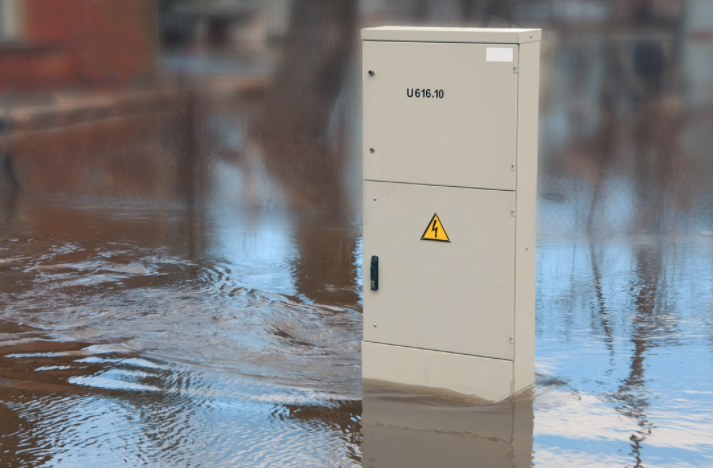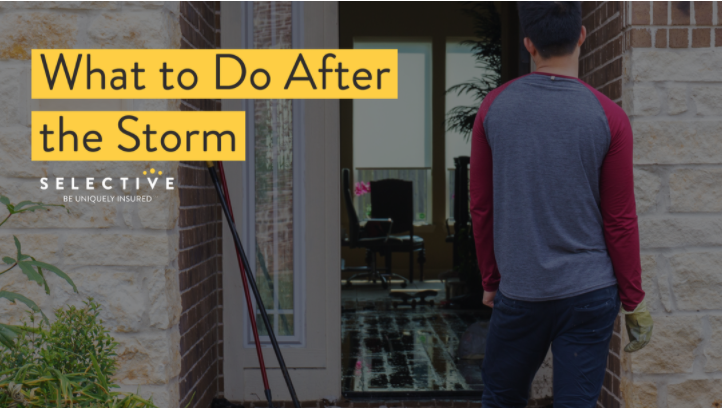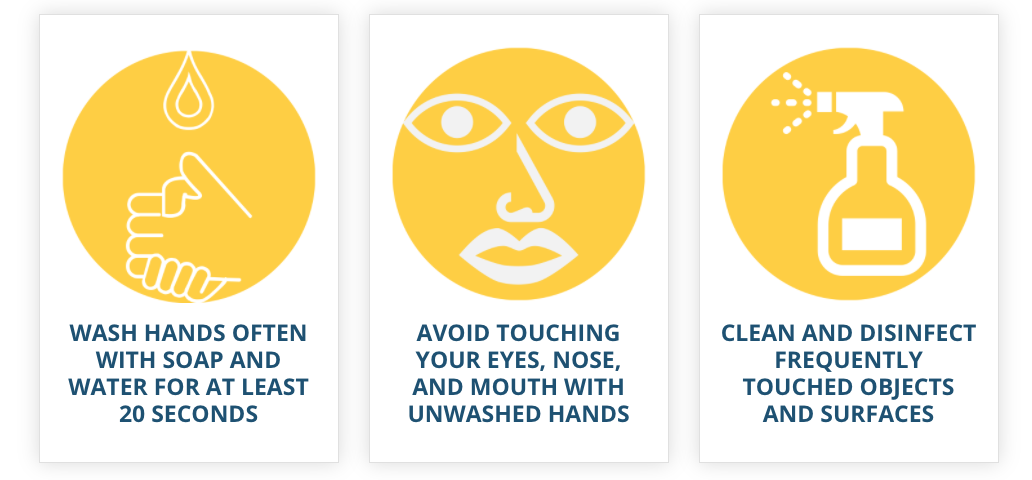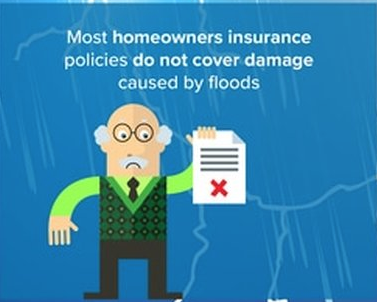Win a free T-Shirt!

Win a free T-Shirt!
As your agent, I want to be sure I’m taking care of your insurance needs. If you give us the opportunity to quote your boat, motorcycle, RV, jet ski, ATV, UTV, golf cart or trailer, you win a free T-Shirt!
***One per customer. While supplies last.
More Women Ascending Business Owner Ladder

Historically, both in the United States and elsewhere, men have represented the majority of the labor force. However, as time has gone on, women have increasingly evened the playing field, particularly in recent years. And not just in terms of participation, but also in position and status. A newly released report indicates as much.
In America’s 25 largest cities by population, female-owned business creation has risen by nearly 45% since 2007, according to recent study conducted by the Center for an Urban Future. Additionally, in the U.S. as a whole and over the same stretch, women entrepreneurs rose 27%.
116% growth in Memphis
Nowhere has women’s ascendance been more apparent than in Tennessee, Memphis to be specific. Between 2007 and 2012, business ownership among women surged 116%, the New York City-based think tank discovered. Second to The Bluff City was Fort Worth, Texas, where the rate rose 78%.
Jonathan Bowles, executive director at the Center for an Urban Future, indicated that women, perhaps more than ever before, are significant contributors to the U.S. economy.
“Women entrepreneurs have become a major catalyst for economic growth in cities across the country,” Bowles explained. “But there is still more that could be done to harness their tremendous economic potential.”
One-third of small businesses owned by women
Women’s representation has been especially noteworthy in the small business sphere. In the 1970s, women owned just 5% of all small businesses. Fast forward approximately 40 years, and their share has increased to 33%, amassing $1.5 trillion in annual revenue and providing jobs to almost 8 million employees, according to a separate report done by American Express. Read Full Article
National Golf Month!
Why Do Dimples Help A Golf Ball?
The reason for golf balls having dimples is to do with drag. The moment a ball is struck, it is slowing down. Well-hit golf shots propel the ball at about 120 mph through the air, and the moisture and pressure in the air get right to work and slow the ball down.
The less area you have on the cover of a golf ball, the less area there is to be affected by the air. The dimples on the golf ball affect the air molecules that affect the ball’s flight. The dimples cause the molecules to roll and bounce around which creates turbulence in the air on the surface of the ball.
A smooth golf ball would travel far shorter as its area is more susceptible to the force of air pressure. In the early years of golf, smooth feather filled balls were used, and it wasn’t until they got scuffed and misshaped that players discovered that a non-smooth ball would travel further. READ MORE
Compliment your Agent

Mr. Meenan,
I’m sending you this email to compliment your agent, Susan Strickland.
I spoke to Susan yesterday about uncertainty with payment on a claim in 2017. Susan responded very quickly and was able to locate a payment and provide us documentation.
Susan was very professional and pleasant to work with, she is an asset to your office.
Regards,
LC
The 5 Hardest Things About Working from Home in My Slippers

What could possibly be difficult about working in the comfort of my own home each day? My commute is approximately five seconds down a hallway. I get to pick the radio station. And, snacks? They’re available any time I want, and may even include a glass of wine! Hey, it’s 5 o’clock somewhere! Before you decide to ditch the 9-to-5 cubicle and find a work-at-home position, I envy you. I really do. Why? Your only distraction is likely social media notifications beeping on your cell phone. I might be typing in my slippers right now, but making my home double as an office is no easy job.
1. Staying Motivated and On-task
When a spare bedroom serves as an office, there’s no boss to loom over your shoulder. You’re on your own to get things done on time and make the daily to-do list disappear. If you’re not a natural go-getter, and one who is up at the crack of dawn, you’ll need a little help staying on task.
I use Google Calendar to map out my day, week and month. I fill it with reminders of writing deadlines when to invoice clients, and schedule interview appointments so I don’t miss a thing. Sometimes I even place a stack of unpaid bills on my desk as a visual motivator to simply get things done.
2. Avoiding Everyday Distractions
So, you’re already highly organized, use a timer to limit your Facebook browsing, and have vowed to not take personal phone calls during your work hours. Good for you. Now it’s time to tackle the unforeseen distractions that will plague your home office.
The Fed-Ex man rings the doorbell which makes the dogs bark when I’m deep in thought. A water pipe has burst when I’ve been up against a deadline. And, my Internet connection has gone out on my busiest day of the month. To avoid these inevitable distractions, I leave my home office to do certain tasks. Try the library, a co-working office space or a coffee shop when you need to focus 100 percent on a project and can’t afford any distractions.
3. Sticking to a Work Schedule
Yes, I mentioned having set work hours above. If you don’t plan out your work days ahead of time, do it now. Not only will this train your brain to stay on task and be productive during set hours, but it also gives you a more professional, organized appearance to those around you.
Treat your work-at-home job — whether you’re an employee or entrepreneur — with respect. If you work full-time, set aside 40 hours each week to complete work tasks. During that time, you’re not allowed to run personal errands or sit on the couch and watch a movie. Make generating income your priority.
4. Resisting Hermit Status
Staying at home for work sounds great until you realize you’re always at home. I work at home, have hobbies at home, and spend time with my family in my home. Sometimes, I just need a change of scenery and to talk to someone other than my dogs and turtles during the day.
Make it a habit to schedule lunch dates with friends or colleagues. Join a gym and take a regular class each week to improve your health and make new friends. Go for walks before you start your day to get invigorated by the fresh air. Make it a point to get out of the house at least once a day, even if it’s only for an hour. Read Full Story
Small Business Nightmare: My Career Almost Went Up in Smoke!

ANGELA TAGUE
Every small business person dreams of the project that will catapult them to the next level in their career. For me, it was an assignment for Time magazine. Yes, that Time magazine. What I never anticipated was nearly burning down the set and making a claim on my small business insurance.
Sometimes Things Go Wrong
It was a warm, windy day. I carefully unloaded a car full of portable studio lighting equipment, reflectors and my power box to illuminate the portrait. I was thrilled to photograph a local award winner at our beautiful cancer treatment facility. The photograph would run as part of an advertisement in an upcoming issue of the magazine with my name proudly printed in the byline.
After setting up a place to create the portrait, I decided to give my equipment a quick test. I fired off some test shots and everything synced beautifully. Each strobe illuminated on cue. I was feeling confident.
A few minutes before go-time I tested my gear once more. I grabbed my camera, took a few test shots of the room and was pleased with the exposure. Everything was perfect. Then I smelled a faint burning odor. I looked around, wondering what was going on, and gasped when I saw my power box shrouded in a cloud of smoke.
I quickly unplugged everything and examined the box. There were no flames. But if there had been, they would have quickly reached the curtains and caused a terrible accident. After ensuring there was no fire, I alerted the cancer center staff and asked for help to air out the smoky room. As I opened doors to let fresh air flood the room, all I could think about was the expensive equipment I had just lost and how I would complete the assignment that was scheduled to start in mere minutes.
The Decision That Saved My Business
When I decided to take photography from hobby status to my full-time career, I talked to my insurance agent. She told me that once the value of my photography gear exceeded the maximum allowances for hobby equipment on my homeowner’s insurance policy, I would need to consider getting small business insurance.
My new policy covered everything I feared: liability and medical payments if someone should trip over my equipment, business interruption coverage if I were unable to work and coverage on my cameras and lenses. I knew even a small situation could quickly put me out of business. With a specific small business insurance policy behind my photography business, I could grow my client base with confidence. Read Full Story
12 Aha! Ideas for Keeping Your Home Cool This Summer
Keeping your home cool in the summer can be a challenge at best. Here we’ve compiled 12 of the best tips to help keep your family cool when the temperature rises.
Close the Blinds
Apply Heat Reducing Film
A Programmable Thermostat
Give Your Ducts a Boost
Driver’s Ed: Worth It or a Waste?

In 2008, teen drivers were responsible for 6,428 fatalities on our nation’s roadways. In fact, Wayne K. Tully, Chief Executive Officer at National Driver Training, reports that the crash rate for 16-year-old drivers is nearly five times that for drivers over 25. This is a sobering statistic for the parents of new drivers.
Enrolling teens in a qualified driver’s education course may help parents ensure that their children stay safe while out on the road. However, some parents question whether these courses are really worth spending the time and money. If you are among these parents, clarification about the following driver’s ed misconceptions may help you come to a decision.
Myth: Requirements for Driver’s Education are Standard Across the Country
Depending on where you live, you may either believe that drivers’ education classes are mandatory or that they are optional for all teen drivers. The fact is that driver’s licensing requirements and teen restrictions vary significantly by state. Some states, such as Florida and Texas, require teens to complete a driver’s ed course before they receive their licenses; other states, such as Georgia and New Jersey, have no education requirements at all.
Just because the course is not required, however, does not mean that it’s not useful. In addition to learning important defensive driving techniques, students in these classes will be taught the many rules of the road, including things you may have overlooked mentioning if you taught your child to drive on your own. Knowledge of these rules can prevent both accidents and ticketing, which can make insurance rates for your teen skyrocket.
Myth: Driver’s Ed Classes Make Teen Drivers Less Safe
In 2009, the National Highway Traffic Safety Administration conducted a study to evaluate the effectiveness of driver’s education courses. In their conclusion, they stated that “the notion that a traditional driver’s education course can by itself produce safer drivers is optimistic.” They also found that some driving classes did not teach students safe driving habits.
This perpetuated the myth that driver’s ed classes make teens less safe, which is not true. The main problem pointed out in the study was that these courses are not regulated and those that teach students only enough to allow them to pass their driver’s license exams are not sufficient for properly teaching teens to drive. They should be supplemented with behind-the-wheel instruction from parents.
The other problem occurred in states that had removed many of the restrictions placed on teens (such as the limitation on passengers or bans on night driving without an adult present) for those who had passed a driver’s education course. Because the first year that teens drive is the most dangerous, it was the removal of these restrictions that was making teens less safe, not driver’s ed classes.
Myth: Driving Schools and Driver’s Education Classes Are Basically the Same Thing
Though driver’s education includes time spent behind the wheel with a certified driving instructor, it is different from a basic driving class.
Driving schools tend to focus almost exclusively on behind-the-wheel training and frequently teach students just enough to enable them to pass their licensing exam. Students may spend time driving on the course or on roadways they will need to drive for their tests, and they will practice the skills, such as parallel parking, that many states require they demonstrate. Very few of these driving schools spend much time teaching detailed safety and defensive driving techniques.
A qualified driver’s education course, on the other hand, will typically include about 30 hours of classroom time and six hours of actual driving time. Students are expected to practice the skills they learn on their own time with their parents or guardians. A driver’s education course will include much more information about rules of the road and safety.
Myth: All Driver’s Education Courses are Created Equal
Driver’s education courses are not federally regulated, though some states and local municipalities have their own standards. As such, some schools are much better than others. This was a point that was brought up in the National Highway Traffic Safety Administration study mentioned above.
In response to this problem, the NHTSA recently issued guidelines to be followed by driver’s education courses, but these guidelines are merely recommendations; they are not requirements. If states are looking for a program that works, they can turn to Oregon, which is frequently lauded by experts for its highly comprehensive program. Oregon’s program has had a significant impact on the reduction of teen-related traffic accidents.
For the most part, however, the programs offered in various states are all over the map. It’s best to try to find one that advertises its adherence to the NHTSA guidelines. Read Full Article
How To Purchase a Home: A Step-by-Step Guide
(Because at some point, you’ve gotta stop looking at the picture and sighing)
| May 17, 2018
You’ve found a home you love and you’re ready to stake your claim. For most buyers, purchasing a home can be confusing, intimidating, and a less-than-ideal way to spend several months, but don’t let off-putting factors like loans, inspections, and competitive offers keep you from movin’ on up.
It’s really not that scary once you’re armed with a little wisdom, an understanding of the process, and foolproof advice that will help you buy like a boss. That’s where we come in.
With some help from Peter Murray, an expert realtor for RE/MAX Plus, we outlined a sweet step-by-step guide that will take you from a daydreamer to a home-buying aficionado. So get ready to start packing and picking out paint colors.

Step 1: Find a Realtor
Peter said that the whole process begins with finding a trustworthy realtor, not a real estate agent, and yes, there’s a difference. (Sorry, agents. Nothing personal.) Realtors have more requirements, additional training and education, and in general, more insight.
They’re also required to follow a Code of Ethics dictated by the National Association of Realtors, to ensure they’re following the best interests of their clients.
He added that realtors, unlike agents, will disclose all known fees up front, so you don’t end up with unhappy surprises. Agents may not offer the same courtesy and may end up tacking on some hidden fees in the end. Who wants that? Not you, right?
Peter broke down some realtor-selecting dos and don’ts for us.
Realtor-Hunting DOs:
- Get a referral from a friend: This realtor will probably have a personality similar to your friend’s, and that will cancel out any potential awkwardness.
- Get a full-time realtor: They will have more experience and wisdom to share with you than their part-time counterparts.
- Get a seasoned vet realtor: You want someone who knows what they’re doing – someone who eats, breathes and exudes realtor-ing.
“Your home will be a huge asset in your life. You want to make sure you find the absolute best, most knowledgeable and trustworthy realtor to help you with such an important process as buying your next home,” said Peter.
Realtor-Hunting DON’Ts:
- Work with a part-time realtor: “No offense to them, you just want someone with more experience,” said Peter.
- Make your selection from a website: Realtors who show up on websites are paying top dollar to be there.
- Work with anyone who gives you bad vibes: If any reservations arise while initially speaking with a realtor, don’t hesitate to swipe left and bounce.
Step 2: Get Pre-Approved for a Loan
Unless you’re swimming in stacks of cash, chances are you’ll be needing a loan. Your realtor or your friends may have recommendations for a lender who could work with you, or your own bank may offer loans. Just like your realtor, it’s important to be comfortable with the lender.
“A good lender should care about your unique financial situation. If on paper, you can afford a $200,000 loan, but you know that realistically you can actually only afford a $100,000 loan, your lender should be sympathetic to that,” said Peter.
Do your research and shop around to determine what you know you can afford, and don’t let yourself be bullied into more than that. But what kind of credit score do you need to qualify for a loan, you may ask? Read Full Article
Purple Heart Day!
































